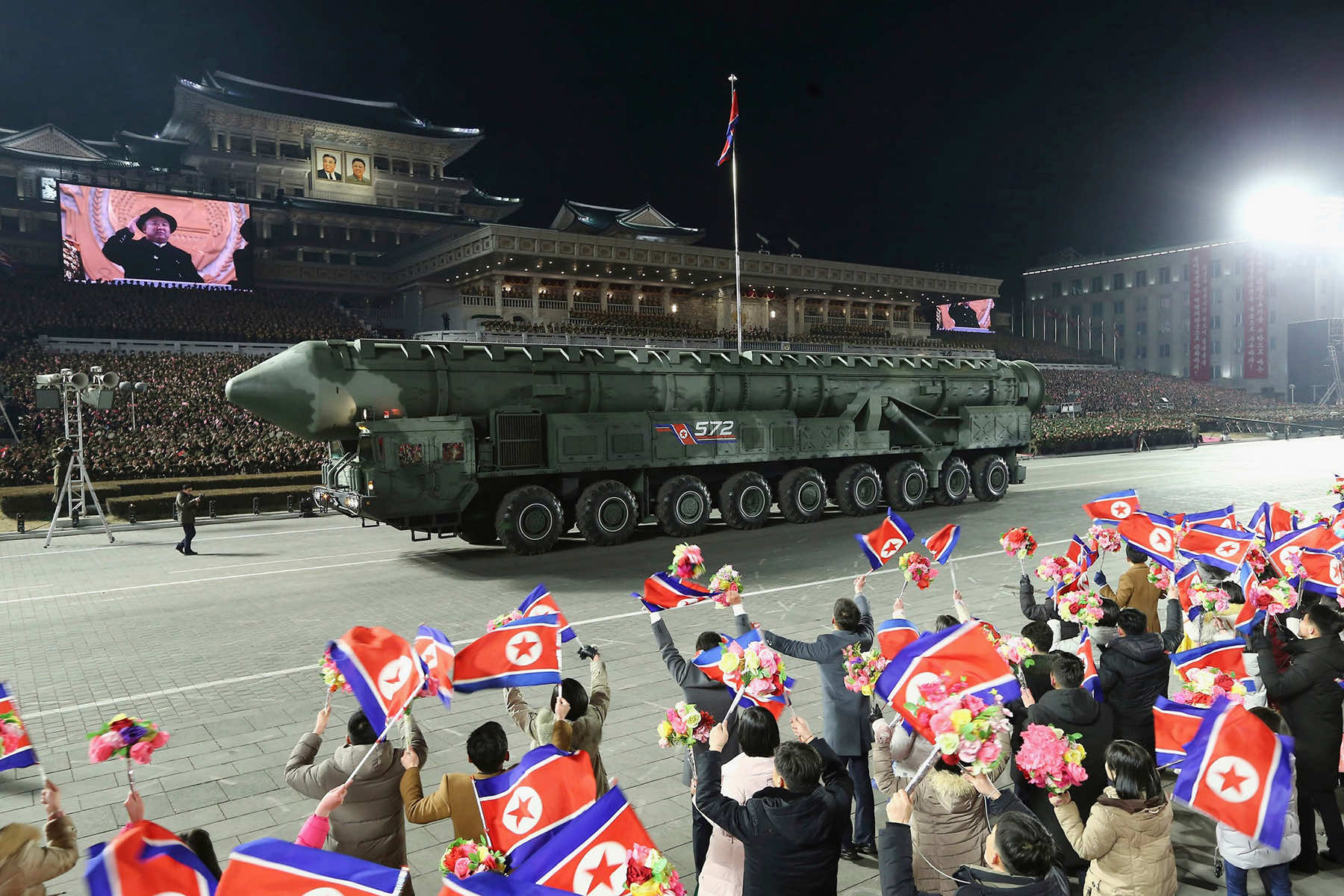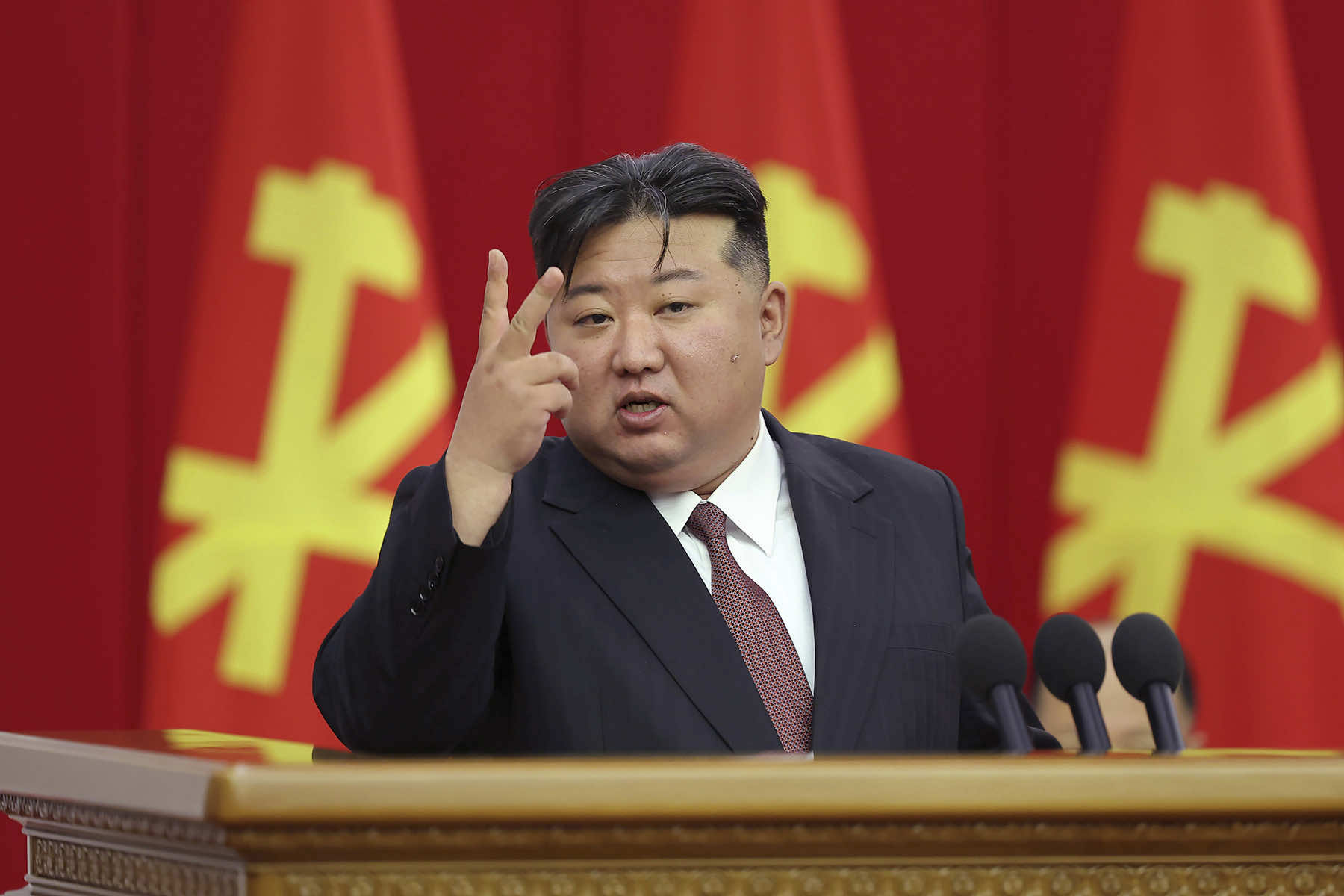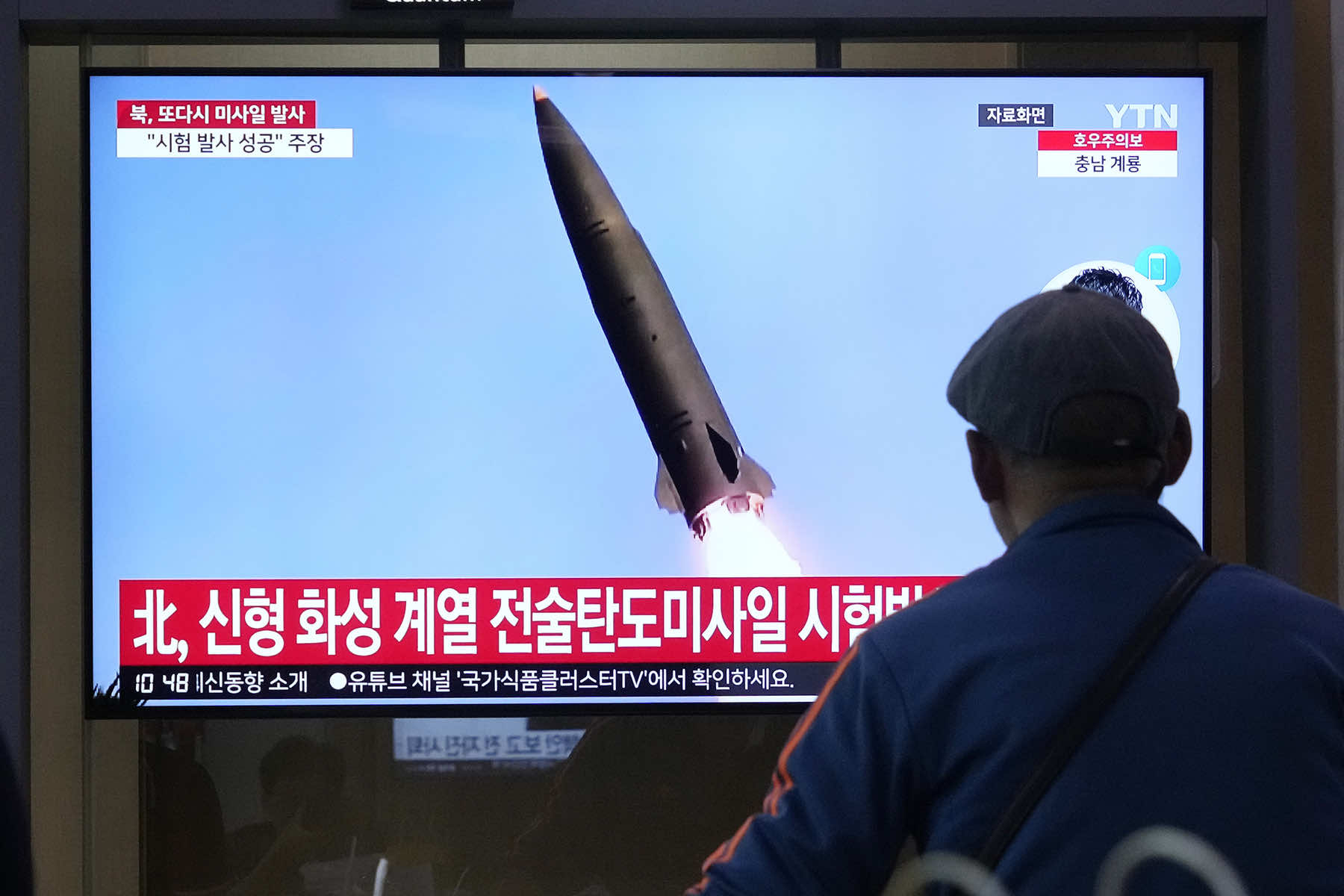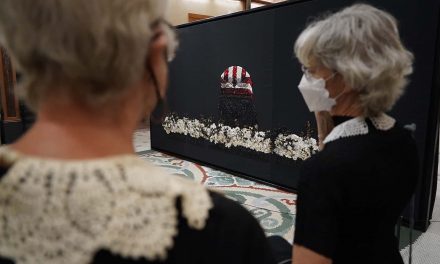
North Korea has significantly intensified its rhetoric and actions in recent months related to its nuclear and missile programs, heightening tensions on the Korean Peninsula and prompting a firm response from the United States and South Korea.
North Korea’s summer announcement of a successful test of a multiwarhead missile represented a major development in its missile program. According to the North’s state media, the test involved the separation and guidance control of individual mobile warheads, ensuring the capability of Multiple Independent Reentry Vehicles (MIRVs).
The separated warheads “were guided correctly to the three coordinate targets” and a decoy that separated from the missile was verified by radar. That technology is crucial for overwhelming missile defenses, particularly those of the United States.
However, South Korea’s military quickly dismissed North Korea’s claim as a cover-up for a failed launch. Joint Chiefs of Staff spokesperson Lee Sung Joon stated that the missile exploded in the initial stage of its flight, contradicting North Korea’s narrative of a successful test. The assessment was based on the detection of more smoke than usual and a possible engine fault causing combustion issues.
Despite the disagreement over the success of the test, experts acknowledge that North Korea’s pursuit of MIRV technology was significant. Ankit Panda, a senior analyst at the Carnegie Endowment for International Peace, noted the presence of decoys in the test.
“The presence of decoys is significant. North Korea has made no secret of its intention to stress and overcome U.S. homeland missile defenses,” Panda said. “Decoys will assist in that endeavor and will likely be incorporated onto their single-warhead missiles as well.”
In response to North Korea’s escalating threats, the United States and South Korea have taken steps to bolster their defense capabilities. On the sidelines of a NATO summit in Washington, President Joe Biden and South Korean President Yoon Suk Yeol authorized the signing of joint nuclear deterrence guidelines.
The guidelines represent the first of their kind between the two allies and aim to integrate U.S. nuclear weapons with South Korean conventional weapons in various contingencies. The establishment of the Nuclear Consultative Group last year was a crucial step in the new direction, enabling enhanced communication on nuclear operations and the development of integrated deterrence plans.
“The presidents underscored that the Guidelines document provides a solid foundation for enhancing U.S.-ROK extended deterrence cooperation in an integrated manner,” said a joint statement by Biden and Yoon.
South Korean officials have highlighted the importance of the guidelines in addressing North Korea’s evolving nuclear threats. Deputy National Security Director Kim Tae-hyo stated that joint military exercises would be conducted to implement the guidelines, with specific U.S. nuclear assets committed to the plans. However, experts caution that these steps, while significant, require continuous refinement and testing.
North Korea’s response to the joint guidelines and increased military cooperation between the U.S., South Korea, and Japan has been predictably hostile. In a statement, North Korea’s Defense Ministry accused its rivals of plotting a nuclear attack and vowed to boost its nuclear deterrent readiness. The ministry warned that the U.S. and South Korea would “pay an unimaginably harsh price” for their provocative acts.
In August, North Korea marked the delivery of 250 nuclear-capable missile launchers to frontline military units at a ceremony where Kim renewed his call for a ceaseless expansion of his military’s nuclear program to counter perceived U.S. threats.
Kim has demonstrated an intent to deploy battlefield nuclear weapons along the North’s border with South Korea and authorized his military to respond with preemptive nuclear strikes if it perceives the leadership as under threat.
The launchers were produced by the county’s munitions factories and designed to fire “tactical” ballistic missiles, a term that describes systems capable of delivering lower-yield nuclear weapons.
Adding to the complexity of the situation is the recent defense pact between North Korean leader Kim Jong Un and Russian dictator Vladimir Putin. The agreement, which required mutual aid if either country was attacked, represented the strongest connection between North Korea and Russia since the end of the Cold War.
Analysts have suggested that the accord could embolden North Korea to continue its provocative actions. The possibility of Russian assistance in North Korea’s missile development, particularly its MIRV program, has raised concerns.
While no concrete evidence of such assistance has been confirmed, the potential for technological support from Russia could accelerate North Korea’s missile advancements and pose a greater threat to regional and global security.
MI Staff (Korea), with Hyung-Jin Kim
Song Kyung Seok (AP), Ahn Young Joon (AP), Rashan Jefferson (AP), and Korea News Service (via AP)
- Exploring Korea: Stories from Milwaukee to the DMZ and across a divided peninsula
- A pawn of history: How the Great Power struggle to control Korea set the stage for its civil war
- Names for Korea: The evolution of English words used for its identity from Gojoseon to Daehan Minguk
- SeonJoo So Oh: Living her dream of creating a "folded paper" bridge between Milwaukee and Korean culture
- A Cultural Bridge: Why Milwaukee needs to invest in a Museum that celebrates Korean art and history
- Korean diplomat joins Milwaukee's Korean American community in celebration of 79th Liberation Day
- John T. Chisholm: Standing guard along the volatile Korean DMZ at the end of the Cold War
- Most Dangerous Game: The golf course where U.S. soldiers play surrounded by North Korean snipers
- Triumph and Tragedy: How the 1988 Seoul Olympics became a battleground for Cold War politics
- Dan Odya: The challenges of serving at the Korean Demilitarized Zone during the Vietnam War
- The Korean Demilitarized Zone: A border between peace and war that also cuts across hearts and history
- The Korean DMZ Conflict: A forgotten "Second Chapter" of America's "Forgotten War"
- Dick Cavalco: A life shaped by service but also silence for 65 years about the Korean War
- Overshadowed by conflict: Why the Korean War still struggles for recognition and remembrance
- Wisconsin's Korean War Memorial stands as a timeless tribute to a generation of "forgotten" veterans
- Glenn Dohrmann: The extraordinary journey from an orphaned farm boy to a highly decorated hero
- The fight for Hill 266: Glenn Dohrmann recalls one of the Korean War's most fierce battles
- Frozen in time: Rare photos from a side of the Korean War that most families in Milwaukee never saw
- Jessica Boling: The emotional journey from an American adoption to reclaiming her Korean identity
- A deportation story: When South Korea was forced to confront its adoption industry's history of abuse
- South Korea faces severe population decline amid growing burdens on marriage and parenthood
- Emma Daisy Gertel: Why finding comfort with the "in-between space" as a Korean adoptee is a superpower
- The Soul of Seoul: A photographic look at the dynamic streets and urban layers of a megacity
- The Creation of Hangul: A linguistic masterpiece designed by King Sejong to increase Korean literacy
- Rick Wood: Veteran Milwaukee photojournalist reflects on his rare trip to reclusive North Korea
- Dynastic Rule: Personality cult of Kim Jong Un expands as North Koreans wear his pins to show total loyalty
- South Korea formalizes nuclear deterrent strategy with U.S. as North Korea aims to boost atomic arsenal
- Tea with Jin: A rare conversation with a North Korean defector living a happier life in Seoul
- Journalism and Statecraft: Why it is complicated for foreign press to interview a North Korean defector
- Inside North Korea’s Isolation: A decade of images show rare views of life around Pyongyang
- Karyn Althoff Roelke: How Honor Flights remind Korean War veterans that they are not forgotten
- Letters from North Korea: How Milwaukee County Historical Society preserves stories from war veterans
- A Cold War Secret: Graves discovered of Russian pilots who flew MiG jets for North Korea during Korean War
- Heechang Kang: How a Korean American pastor balances tradition and integration at church
- Faith and Heritage: A Pew Research Center's perspective on Korean American Christians in Milwaukee
- Landmark legal verdict by South Korea's top court opens the door to some rights for same-sex couples
- Kenny Yoo: How the adversities of dyslexia and the war in Afghanistan fueled his success as a photojournalist
- Walking between two worlds: The complex dynamics of code-switching among Korean Americans
- A look back at Kamala Harris in South Korea as U.S. looks ahead to more provocations by North Korea
- Jason S. Yi: Feeling at peace with the duality of being both an American and a Korean in Milwaukee
- The Zainichi experience: Second season of “Pachinko” examines the hardships of ethnic Koreans in Japan
- Shadows of History: South Korea's lingering struggle for justice over "Comfort Women"
- Christopher Michael Doll: An unexpected life in South Korea and its cross-cultural intersections
- Korea in 1895: How UW-Milwaukee's AGSL protects the historic treasures of Kim Jeong-ho and George C. Foulk
- "Ink. Brush. Paper." Exhibit: Korean Sumukhwa art highlights women’s empowerment in Milwaukee
- Christopher Wing: The cultural bonds between Milwaukee and Changwon built by brewing beer
- Halloween Crowd Crush: A solemn remembrance of the Itaewon tragedy after two years of mourning
- Forgotten Victims: How panic and paranoia led to a massacre of refugees at the No Gun Ri Bridge
- Kyoung Ae Cho: How embracing Korean heritage and uniting cultures started with her own name
- Complexities of Identity: When being from North Korea does not mean being North Korean
- A fragile peace: Tensions simmer at DMZ as North Korean soldiers cross into the South multiple times
- Byung-Il Choi: A lifelong dedication to medicine began with the kindness of U.S. soldiers to a child of war
- Restoring Harmony: South Korea's long search to reclaim its identity from Japanese occupation
- Sado gold mine gains UNESCO status after Tokyo pledges to exhibit WWII trauma of Korean laborers
- The Heartbeat of K-Pop: How Tina Melk's passion for Korean music inspired a utopia for others to share
- K-pop Revolution: The Korean cultural phenomenon that captivated a growing audience in Milwaukee
- Artifacts from BTS and LE SSERAFIM featured at Grammy Museum exhibit put K-pop fashion in the spotlight
- Hyunjoo Han: The unconventional path from a Korean village to Milwaukee’s multicultural landscape
- The Battle of Restraint: How nuclear weapons almost redefined warfare on the Korean peninsula
- Rejection of peace: Why North Korea's increasing hostility to the South was inevitable
- WonWoo Chung: Navigating life, faith, and identity between cultures in Milwaukee and Seoul
- Korean Landmarks: A visual tour of heritage sites from the Silla and Joseon Dynasties
- South Korea’s Digital Nomad Visa offers a global gateway for Milwaukee’s young professionals
- Forgotten Gando: Why the autonomous Korean territory within China remains a footnote in history
- A game of maps: How China prepared to steal Korean history to prevent reunification
- From Taiwan to Korea: When Mao Zedong shifted China’s priority amid Soviet and American pressures
- Hoyoon Min: Putting his future on hold in Milwaukee to serve in his homeland's military
- A long journey home: Robert P. Raess laid to rest in Wisconsin after being MIA in Korean War for 70 years
- Existential threats: A cost of living in Seoul comes with being in range of North Korea's artillery
- Jinseon Kim: A Seoulite's creative adventure recording the city’s legacy and allure through art
- A subway journey: Exploring Euljiro in illustrations and by foot on Line 2 with artist Jinseon Kim
- Seoul Searching: Revisiting the first film to explore the experiences of Korean adoptees and diaspora























